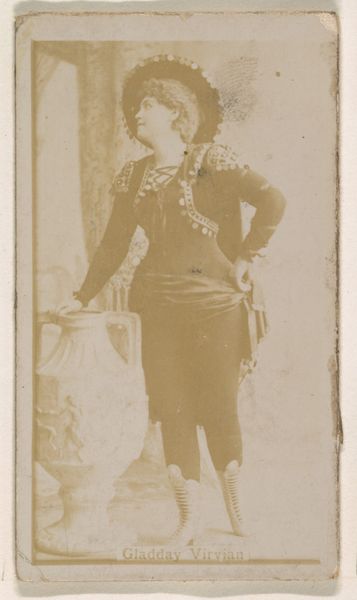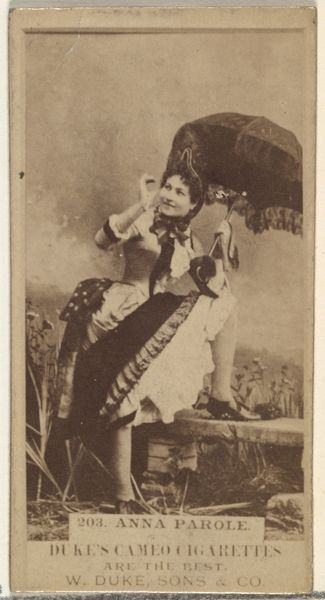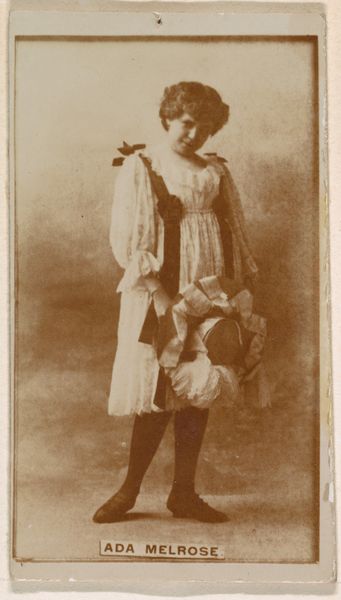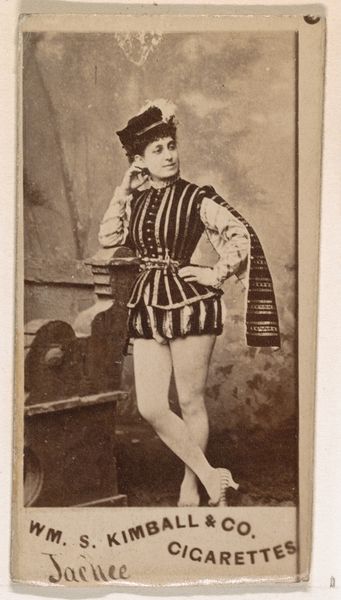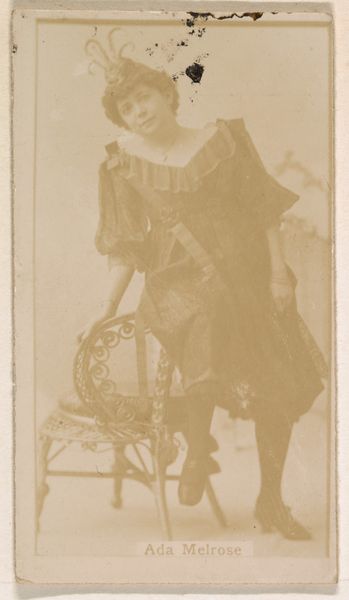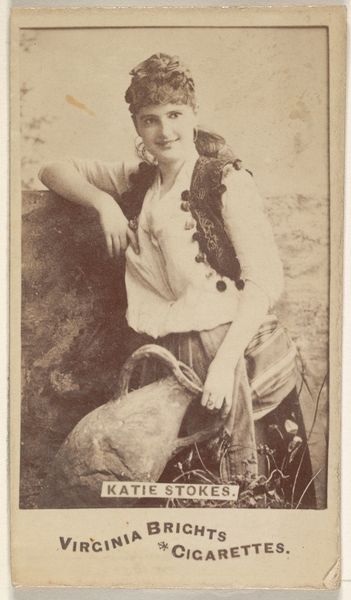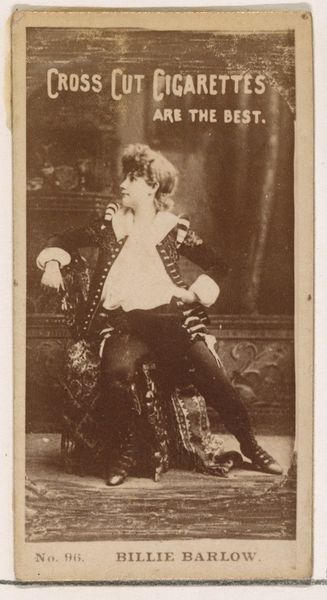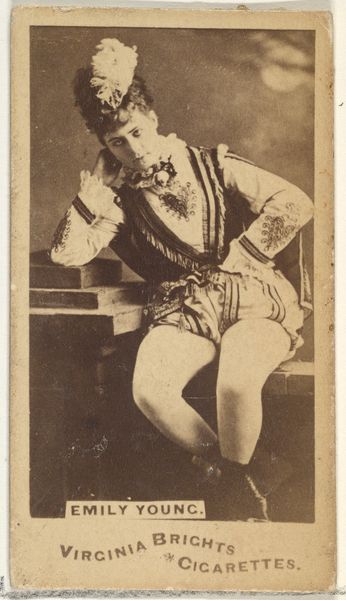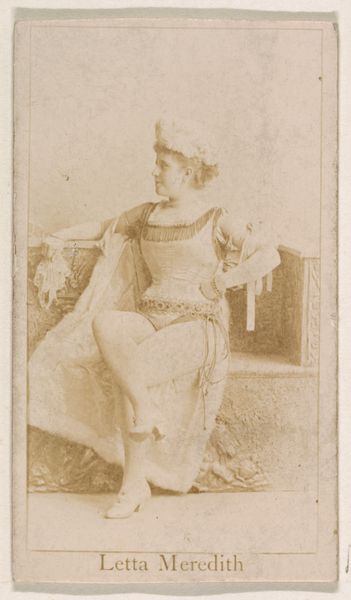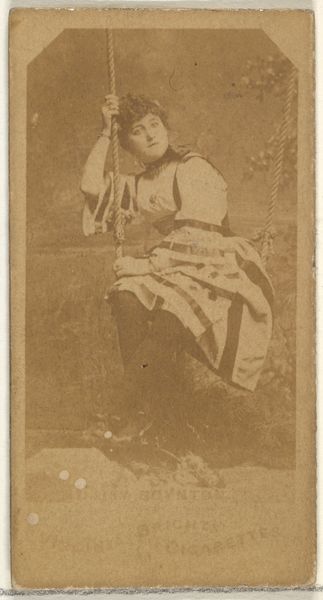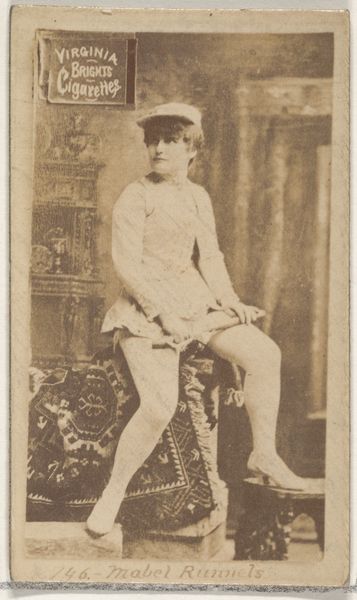
photography
#
portrait
#
still-life-photography
#
photography
#
19th century
#
realism
Dimensions: height 135 mm, width 98 mm
Copyright: Rijks Museum: Open Domain
Editor: This is a fascinating photographic portrait, entitled "Portrait of a Woman with a Tennis Racket in Hand," dating from between 1880 and 1940. The woman’s formal attire strikes me as quite a contrast with the tennis racket. How do you interpret this work? Curator: This piece offers a potent visual commentary on the evolving roles of women during this period. The tennis racket, a symbol of leisure and physical activity, contrasts with the formality of her attire, highlighting a tension between societal expectations of women and their burgeoning desire for independence and self-expression. Who was being included in the “leisure class” and what impact did their visibility have on those excluded from those activities due to racial and socioeconomic boundaries? Editor: That’s a great point. So, it’s about more than just leisure? Curator: Absolutely. Consider the historical context: this was a time of significant social change, with women actively pushing against restrictive norms. Sport, including tennis, became a space where women could challenge these norms, demonstrate their physical capabilities, and claim a more active role in public life. How does the photograph, as a medium, contribute to the narrative? Editor: Well, photography made images like this much more widely accessible than, say, painted portraits. So this idea of women participating in sport could spread more easily. Curator: Precisely. Photography democratized representation. It also provided women with agency in shaping their own image, quite literally. Looking at it through the lens of feminist theory, this portrait disrupts traditional representations of women as passive and domesticated. Editor: I never thought of it that way. Curator: It's a powerful reminder of how even seemingly simple portraits can reveal complex social and political narratives. Examining artworks like these reminds us of the multifaceted experiences of women, whose choices were informed and, at times, limited by both gender and class. Editor: That gives me a lot to consider. Thank you!
Comments
No comments
Be the first to comment and join the conversation on the ultimate creative platform.
